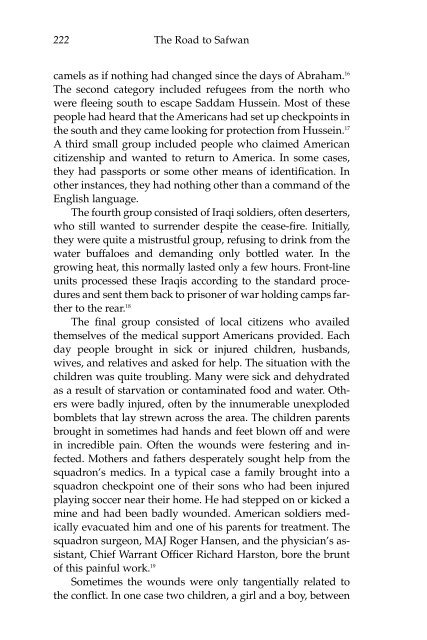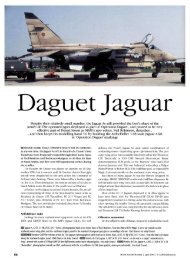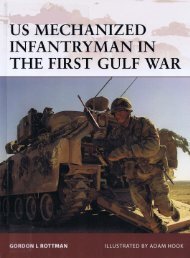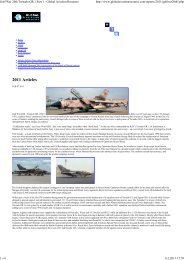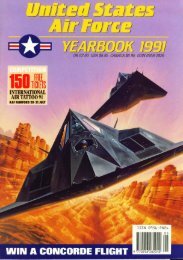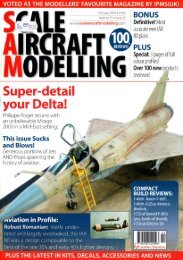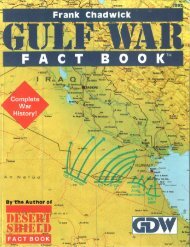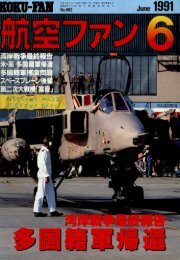The Road to Safwan: The 1st Squadron, 4th Cavalry in the 1991 ...
The Road to Safwan: The 1st Squadron, 4th Cavalry in the 1991 ...
The Road to Safwan: The 1st Squadron, 4th Cavalry in the 1991 ...
You also want an ePaper? Increase the reach of your titles
YUMPU automatically turns print PDFs into web optimized ePapers that Google loves.
222 <strong>The</strong> <strong>Road</strong> <strong>to</strong> <strong>Safwan</strong><br />
camels as if noth<strong>in</strong>g had changed s<strong>in</strong>ce <strong>the</strong> days of Abraham. 16<br />
<strong>The</strong> second category <strong>in</strong>cluded refugees from <strong>the</strong> north who<br />
were flee<strong>in</strong>g south <strong>to</strong> escape Saddam Husse<strong>in</strong>. Most of <strong>the</strong>se<br />
people had heard that <strong>the</strong> Americans had set up checkpo<strong>in</strong>ts <strong>in</strong><br />
<strong>the</strong> south and <strong>the</strong>y came look<strong>in</strong>g for protection from Husse<strong>in</strong>. 17<br />
A third small group <strong>in</strong>cluded people who claimed American<br />
citizenship and wanted <strong>to</strong> return <strong>to</strong> America. In some cases,<br />
<strong>the</strong>y had passports or some o<strong>the</strong>r means of identification. In<br />
o<strong>the</strong>r <strong>in</strong>stances, <strong>the</strong>y had noth<strong>in</strong>g o<strong>the</strong>r than a command of <strong>the</strong><br />
English language.<br />
<strong>The</strong> fourth group consisted of Iraqi soldiers, often deserters,<br />
who still wanted <strong>to</strong> surrender despite <strong>the</strong> cease-fire. Initially,<br />
<strong>the</strong>y were quite a mistrustful group, refus<strong>in</strong>g <strong>to</strong> dr<strong>in</strong>k from <strong>the</strong><br />
water buffaloes and demand<strong>in</strong>g only bottled water. In <strong>the</strong><br />
grow<strong>in</strong>g heat, this normally lasted only a few hours. Front-l<strong>in</strong>e<br />
units processed <strong>the</strong>se Iraqis accord<strong>in</strong>g <strong>to</strong> <strong>the</strong> standard procedures<br />
and sent <strong>the</strong>m back <strong>to</strong> prisoner of war hold<strong>in</strong>g camps far<strong>the</strong>r<br />
<strong>to</strong> <strong>the</strong> rear. 18<br />
<strong>The</strong> f<strong>in</strong>al group consisted of local citizens who availed<br />
<strong>the</strong>mselves of <strong>the</strong> medical support Americans provided. Each<br />
day people brought <strong>in</strong> sick or <strong>in</strong>jured children, husbands,<br />
wives, and relatives and asked for help. <strong>The</strong> situation with <strong>the</strong><br />
children was quite troubl<strong>in</strong>g. Many were sick and dehydrated<br />
as a result of starvation or contam<strong>in</strong>ated food and water. O<strong>the</strong>rs<br />
were badly <strong>in</strong>jured, often by <strong>the</strong> <strong>in</strong>numerable unexploded<br />
bomblets that lay strewn across <strong>the</strong> area. <strong>The</strong> children parents<br />
brought <strong>in</strong> sometimes had hands and feet blown off and were<br />
<strong>in</strong> <strong>in</strong>credible pa<strong>in</strong>. Often <strong>the</strong> wounds were fester<strong>in</strong>g and <strong>in</strong>fected.<br />
Mo<strong>the</strong>rs and fa<strong>the</strong>rs desperately sought help from <strong>the</strong><br />
squadron’s medics. In a typical case a family brought <strong>in</strong><strong>to</strong> a<br />
squadron checkpo<strong>in</strong>t one of <strong>the</strong>ir sons who had been <strong>in</strong>jured<br />
play<strong>in</strong>g soccer near <strong>the</strong>ir home. He had stepped on or kicked a<br />
m<strong>in</strong>e and had been badly wounded. American soldiers medically<br />
evacuated him and one of his parents for treatment. <strong>The</strong><br />
squadron surgeon, MAJ Roger Hansen, and <strong>the</strong> physician’s assistant,<br />
Chief Warrant Officer Richard Hars<strong>to</strong>n, bore <strong>the</strong> brunt<br />
of this pa<strong>in</strong>ful work. 19<br />
Sometimes <strong>the</strong> wounds were only tangentially related <strong>to</strong><br />
<strong>the</strong> conflict. In one case two children, a girl and a boy, between


